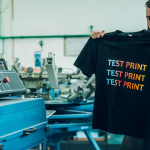Table of Contents
- Consistent Production of Quality Content
- Leveraging Visual Media
- Focusing on High-Intent Keywords
- Effective Internal Linking
- Regular Content Updates and Repurposing
- Building High-Quality Backlinks
- Developing Content Clusters
- Balancing AI and Human Content Creation
Achieving lasting visibility on search engines is one of the most significant challenges for marketers and business owners in today’s intensely competitive digital environment. With Google’s algorithm continually evolving, staying ahead demands more than once-and-done tactics or surface-level optimization. Businesses that consistently earn top rankings embrace adaptability and long-term thinking, ensuring their online presence remains robust no matter how ranking criteria shift. Whether you’re an entrepreneur laying the groundwork or a scaling brand aiming for broader reach, mastering sustainable SEO strategies is essential for ongoing traffic and credible authority. For expert support tailored to your needs, you can visit this page to learn more about partnering with a specialized SEO agency in Austin that understands the local market and global trends.
Implementing a holistic approach to SEO transforms your website from a static online brochure into a powerful channel for customer acquisition and business growth. The most effective SEO strategies aren’t just trendy—they’re designed to stand the test of time and adapt to unpredictable shifts in the search landscape. Longevity in SEO comes from combining proven tactics that build upon one another, rather than relying on any single trick. This in-depth guide explores the foundational tactics that create steady, long-term SEO growth. Throughout, you’ll find real-world industry examples and actionable tips so you can start strengthening your own digital footprint and outperforming competitors today.
Consistent Production of Quality Content
Top-performing websites prioritize the regular publication of well-researched, thoughtfully crafted content that is tailored to their target audience’s interests and pain points. It’s not just about churning out articles for the sake of quantity. Every single piece needs to provide genuine value, incorporate trustworthy sources, and directly address common questions or emerging topics in your field. This transformation highlights that consistent effort and care lead to measurable gains, and also demonstrates how quality pairs with regularity to secure both higher rankings and lasting audience loyalty through ongoing content development.
Leveraging Visual Media
Modern internet users demand a rich digital experience that goes beyond plain text. Incorporating videos, infographics, data visualizations, and interactive tools throughout your site not only elevates your content but also holds visitors’ attention for longer. Visual media can clarify complex topics, increase dwell time, and make articles dramatically more shareable across social channels. Websites that invest in visual storytelling—showcasing workflows, processes, or customer journeys—often see higher engagement rates, more inbound links, and improved bounce rates. According to Search Engine Land, visually engaging content often acts as a natural backlink magnet, increasing your reach organically as others reference or embed your assets. As Google increasingly values user experience signals, sites that combine compelling visuals with strategic SEO practices continually outperform text-only competitors in rankings and referral traffic.
Focusing on High-Intent Keywords
Identifying and targeting keywords that reflect a searcher’s readiness to take action—known as high-intent queries—should form the cornerstone of an effective SEO campaign. High-intent keywords reflect a user’s proximity to a decision, such as “buy,” “compare,” “best reviews,” or location-based searches like “near me.” By focusing articles and landing pages on these terms and analyzing your competitors’ keyword gaps, you can address gaps in existing content and ensure your material aligns perfectly with user needs. Integrating long-tail phrases and supporting your content with detailed topic clusters can significantly improve your ranking for these crucial queries. Aligning your work with transactional, informational, or navigational intent shortens the path between discovery and conversion, ensuring your organic traffic is highly relevant and ready to engage.
Effective Internal Linking
Strategic internal linking is a core component of technical SEO as well as an essential user experience factor. Well-planned internal links distribute link equity throughout your site, reinforce your most important (cornerstone) pages, and help Google thoroughly crawl and index your content. Instead of relying on basic navigation, ensure your contextual links use descriptive, relevant anchor text that signals the content’s topic to both users and search engines. When publishing new material, always relate it purposefully to high-value pages—this could mean linking blog posts to main service offerings or connecting closely related educational articles. As your website grows, conduct periodic audits to remove broken links and address orphaned pages (content not linked from anywhere else). This attention to internal linking structure boosts overall site performance, increases user engagement by making content easier to find, and strengthens your site’s authority signal in Google’s eyes, driving smarter, more sustainable ranking growth.
Regular Content Updates and Repurposing
Even evergreen content can lose its ranking power if it isn’t kept up to date. Regularly refreshing older posts with current research, up-to-date statistics, or additional case studies ensures that your website remains relevant to both new visitors and search engine algorithms. Beyond updates, consider repurposing top-performing articles into various formats—such as transforming a well-received blog into a short video series, a detailed podcast, or a downloadable guide. This not only gives your high-value messages new life but also extends their reach to audiences who prefer different content formats. Repurposing also helps you maintain publishing frequency without always starting from scratch, making your overall SEO investment more efficient. This blend of content renewal and diversification is a proven way to keep your brand top-of-mind and to expand your influence across platforms while saving valuable time and creative resources.
Building High-Quality Backlinks
Backlinks—links from reputable, authoritative websites—remain one of the most important ranking factors in Google’s algorithm. However, not all backlinks are created equal; high-quality endorsements from respected sources can dramatically elevate your domain authority, while low-quality links can do more harm than good. Building a strong backlink profile takes time, creativity, and outreach. Effective strategies include guest posting well-researched articles on established industry publications, producing original research or comprehensive case studies that others naturally reference, and participating in media requests and thought leadership opportunities through platforms like HARO (Help a Reporter Out). Securing even a few high-authority backlinks can propel your site past competitors, signaling to Google that your content is trustworthy, well-vetted, and deserving of top positioning for your focus keywords.
Developing Content Clusters
Modern content marketing isn’t about isolated articles but about creating entire ecosystems of related resources, commonly called “content clusters.” At the center lies a comprehensive pillar page on a broad topic, supported by in-depth articles that explore individual subtopics in detail. This interconnected structure signals your topical authority to both users and search engines, making it easier to capture a broader range of relevant queries. For a deeper dive into how content clusters work and why they matter for SEO, see this guide from Search Engine Journal. For instance, a health-focused website may create a comprehensive nutrition guide as a pillar, alongside related cluster articles on vitamins, meal planning, and specific dietary advice. This approach not only helps answer user questions more deeply but also encourages more extended site visits, as readers move from one relevant piece to another. Over time, content clusters build site structure, deliver a superior user journey, and position your site to own entire topic areas, driving sustained organic growth.
Balancing AI and Human Content Creation
Artificial intelligence tools are transforming the way marketers approach content creation, streamlining research and draft generation. However, lasting SEO success still depends on human expertise, strategic editing, and a commitment to authenticity. The most effective brands harness AI for efficiency—speeding up outlines, headlines, or competitive analysis—but always apply a careful editorial lens to ensure originality, depth, and emotional resonance. Integrating case studies, personal insights, and expert commentary elevates your content above algorithm-generated sameness, making it more likely to earn shares, links, and trust. This thoughtful blend of technology and human touch ensures that your articles appeal to both Google and real-world audiences, resulting in more reliable ranking gains and stronger brand credibility.
Ultimately, reliable SEO results are the product of a sustained commitment to foundational strategies, executed with care and consistency over time. By focusing on quality, authority, and user experience, you’ll not only ride out the volatility of algorithm updates but also secure your website’s position as an industry leader for years to come. True SEO success is about building lasting value—for your business, your audience, and the entire digital ecosystem you hope to influence.


